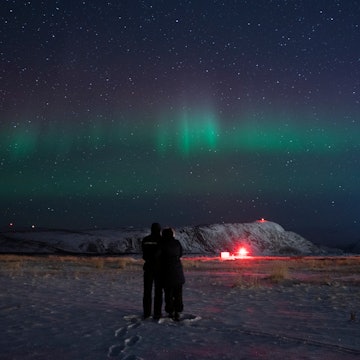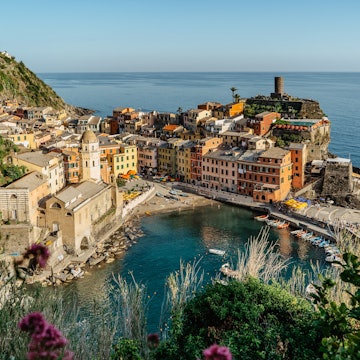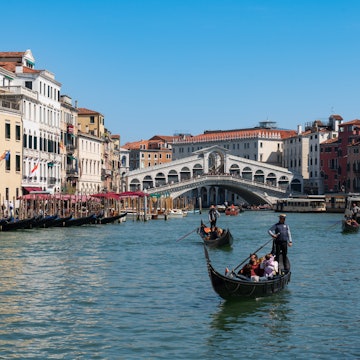

Hikers in Dyrhólaey Nature Preserve. Daniel Dorsa for Lonely Planet
Vast landscapes stretch between volcanoes and ice-capped mountains. Coastal roads snake around fjords, passing fishing villages, isolated churches and the odd sheep bleating on the roadside. Iceland’s countryside is as diverse as it is dramatic.
It's also relatively tiny – at roughly 40,000 sq miles, Iceland is a tad smaller than the state of Ohio. But despite its size, it can still be a tricky country to navigate. All those volcanic landscapes and fjords make for difficult terrain, and as all the locals know, fickle weather patterns can throw the best-laid travel plans into disarray. Luckily, some of Iceland's top spots are just a few miles from Reykjavík, meaning that you may not need to travel very far to see some of Iceland's most iconic sights.
But there's also a whole country out there to explore. From hiring your own transportation to taking the bus, here's how to get around Iceland.
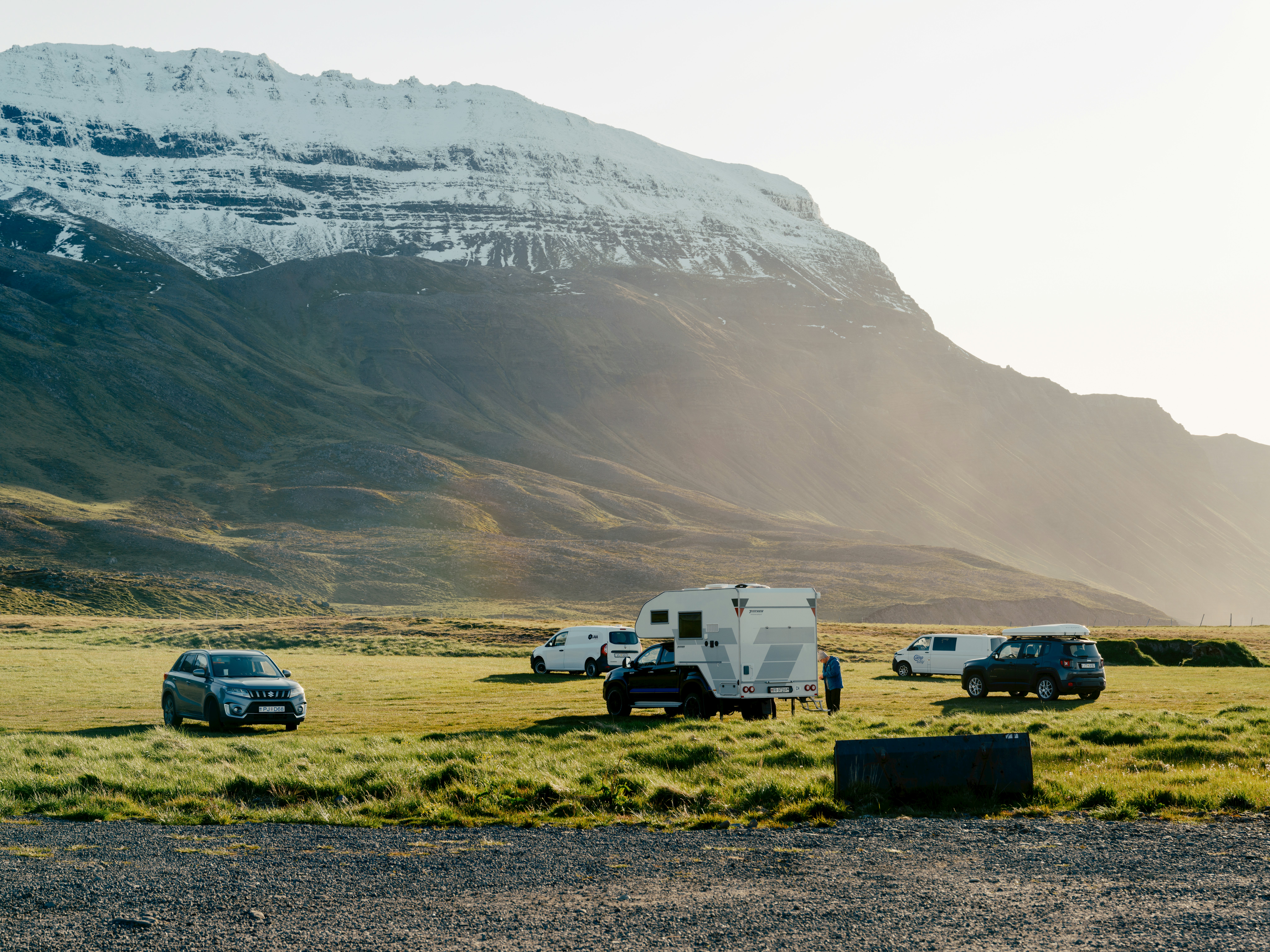
Using cars or camper vans to see more on your own timeline
Exploring Iceland on your own four wheels gives you the freedom to travel at your own pace, and the network of roads is generally adequate with low traffic. Route 1 (better known as the Ring Road) encircles the country, with other paved or gravel roads spiraling into the rest of the country like the roots of a vine. During the summer, a 2WD car is all you need to navigate Iceland’s main roads. Unless you have a 4WD, you should avoid the highlands or anything prefixed with an F (such as F88).
Taking a coastal route is an especially scenic and enjoyable way to see the countryside, although navigating Iceland’s fjords can sometimes add an hour or more to a trip. Many mountain roads close in the winter, so plan ahead. The Icelandic Road and Coastal Administration posts regular updates on closures.
Drivers from the US, Canada, Australia, New Zealand and most European countries must have a valid driver’s license from their home country. Many places will accept an International Driving Permit (IDP) provided by the automobile association of your home country.
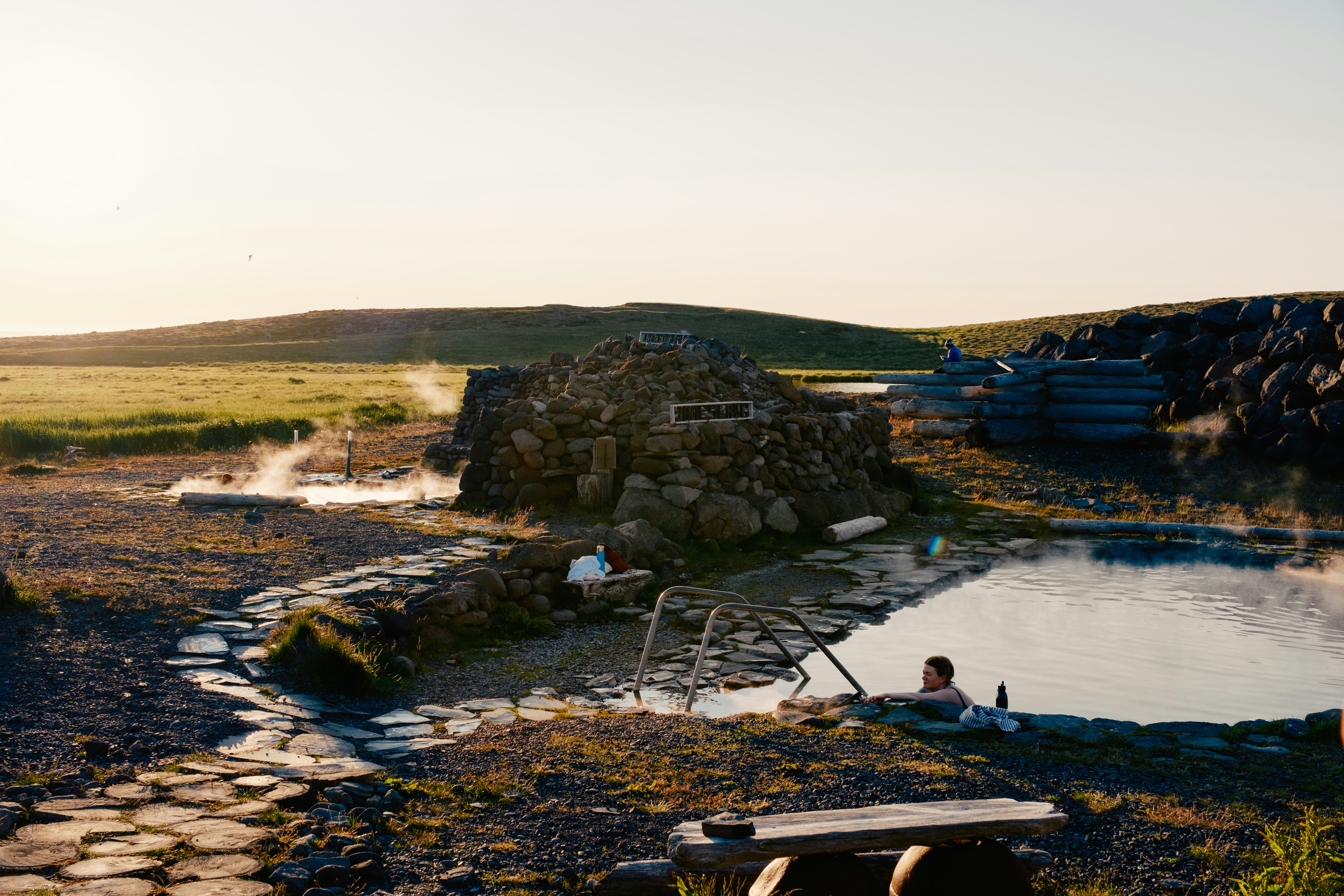
Explore in a camper
Combining accommodation and transportation costs into one expense, campers are a popular way for travelers to explore Iceland. Unlike most accommodations, Iceland’s campsites don’t need to be pre-booked, so traveling in a motor home allows for an amount of spontaneity.
Summer is the best time to see Iceland in a camper. During winter, most infrastructure that services campers, such as campsites and public bathing facilities, closes up shop. Moreover, winter weather can derail even the best-planned trip.
Most major rental agencies offer some type of motor home, but it pays to go local. A cottage industry of Icelandic camper rental companies has sprouted up in the past few years, offering everything from family-sized behemoths to all-terrain setups equipped for the highlands. Many companies will throw in GPS or wi-fi hotspots, cooking gear or fishing equipment. Common favorites include CampEasy or Go Campers.

Rent a car
Renting a car is fairly straightforward in Iceland, although it pays to consider a few things like price, insurance and what to do in the event of a breakdown.
International rental agencies like Europcar, Budget and Avis are available. Still, local agencies like Blue Car Rental, A Car Rental, and Go Car Rental might be able to provide extra services like wi-fi hotspots or included insurance at better rates. In Iceland, car rental costs are often higher than in other countries, and it's worth booking in advance for a cheaper rate.
Depending on where you're headed or when you're traveling, consider the additional gravel or sand and ash insurance protection. Most insurance policies don't cover these types of damage on regular damage waivers, so if you're traveling during autumn or spring, when sand or ash storms can be particularly bad, get this extra insurance. Anyone heading out into the F roads should consider gravel protection as well.
Be sure to do a thorough inspection before signing for the keys. Due to Iceland’s gravel roads, bumps, scratches and dings are common. Notify the rental agency and take photos of anything larger than a fingernail.
Tips for filling up with gas: The rental agent will tell you which type of fuel to use (diesel vs gasoline), and usually there’s a sticker on the tank door if you forget. Gas stations are regularly spaced along Iceland’s main roads, but if you’re traveling into remote areas like the highlands, be sure that you have adequate gas beforehand.
Most small gas stations are unstaffed, and pumps are automated. All automated machines require a card with a PIN. If you don’t have one, you can purchase a prepaid card at an N1 station to use at automated pumps. Some US credit card companies will issue a PIN; call yours to check.
Familiarity with a car jack and how to change a spare can go a long way when a tire goes flat in the middle of a long and empty road. If anything happens to your rental, call your rental agency for help.
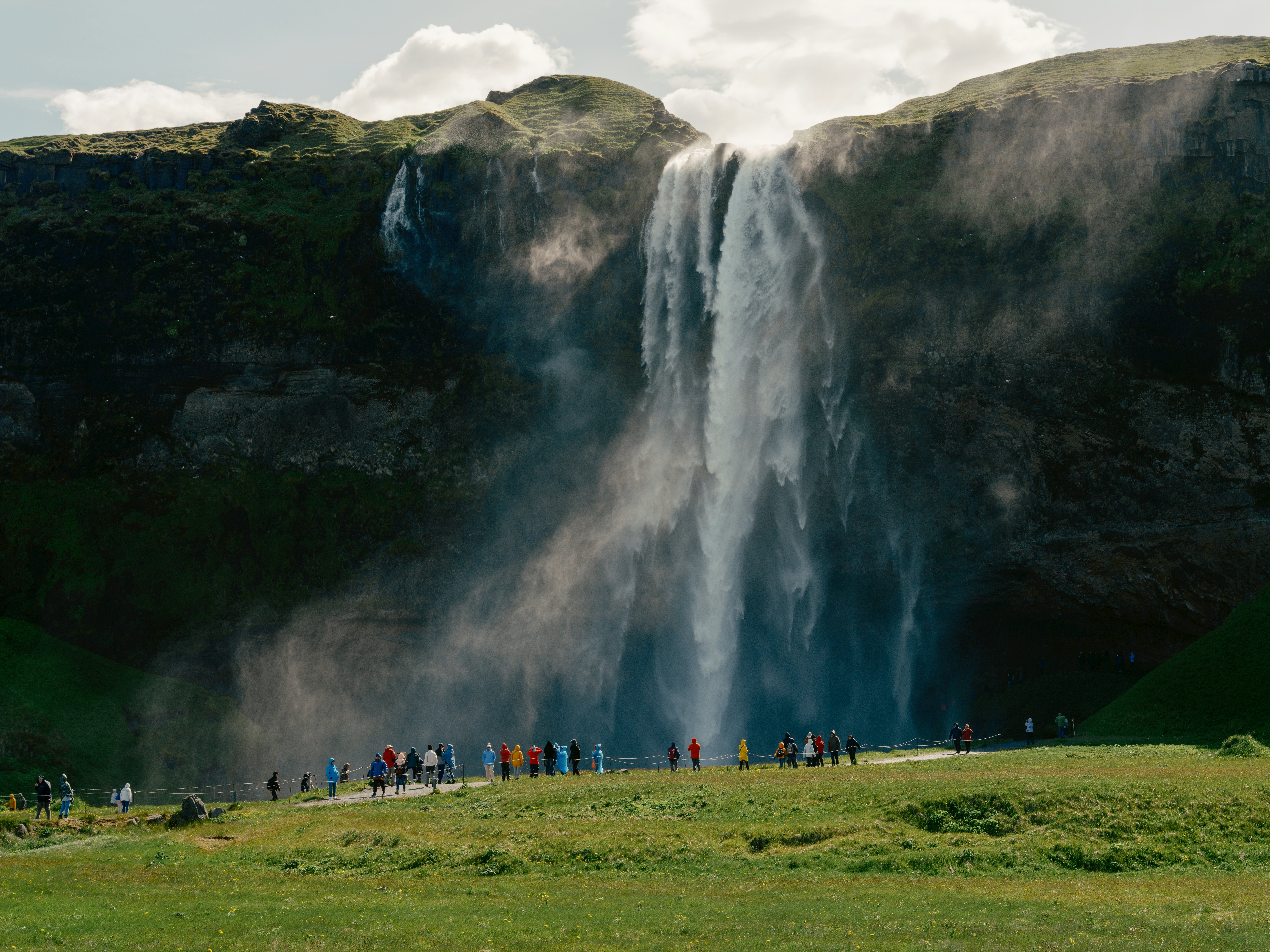
Taking advantage of buses for budget travel
Iceland’s bus networks are a hodgepodge of public bus routes and tourist-service routes, the latter of which runs only during the summer (typically July and August). Still, the bus network makes it possible to get around Iceland without a car, which is a better option for travelers on a budget.
Use public buses for main towns and coastal areas
Iceland’s public bus services are made up of Stræto, which nearly circumnavigates the country on the Ring Road; Svaust in the east, which connects to the Stræto Ring Road route at Egilsstaðir and Höfn; and West Iceland’s local bus lines. This network of routes services most main towns around the coast, as well as popular hiking areas.
Iceland’s public buses run year-round, but many reduce services during the winter months and some stop altogether. Iceland’s fickle weather can also cause havoc on schedules and routes, so plan plenty of time into your schedule in case there are delays.
Try tourist buses during the summer
Throughout the summer, buses operated by various tour companies like Reykjavík Excursions and Volcano Huts shuttle visitors around highlights in West Iceland. These bus routes can serve as sightseeing transportation or simple A-to-B service. Many buses are equipped with GPS tracking that allows you to track where your bus is, and some have onboard wi-fi as well.

Flying domestically in winter
Domestic flights are a quick but expensive way to navigate the country. The main domestic airports are in Reykjavík (though not Keflavik, which is exclusively international), Akureyri and Egilsstaðir.
Due largely to Iceland’s difficult terrain, locals have adopted air travel as a mode of transportation almost akin to national bus or rail networks, especially in winter. A listing of airports, including nearby attractions and parking information, can be found at the national airport provider, Isavia.

Cycling if you want a challenge
Around the coast, roads are generally flat and paved, and cycling is an excellent way to see this part of the country. Be warned, though: Iceland’s weather can be hell to bike through, so be prepared to face wind that seems perpetually against you, cold and torrential rain, and sand- and snowstorms, even in summer.
Most of the Ring Road doesn’t have much of a hard shoulder, so you’ll frequently be forced to ride in traffic (such as it is in Iceland). The majority of the Ring Road is open to cyclists, except for two stretches in the west – the Hvalfjörður Tunnel and the area around Reykjavík, where the road becomes a proper motorway. Most cyclists can complete the Ring Road in two weeks.
Top tips for cyclists: Cycling necessities like tire repair kits and spares can be easily found in Reykjavík, but they’ll more or less vanish outside of town. Make sure to stock up before departing. Most cyclists bring their own bikes to Iceland, but Reykjavík Bike Tours offers multi-day mountain bike rentals that serve as touring bikes.
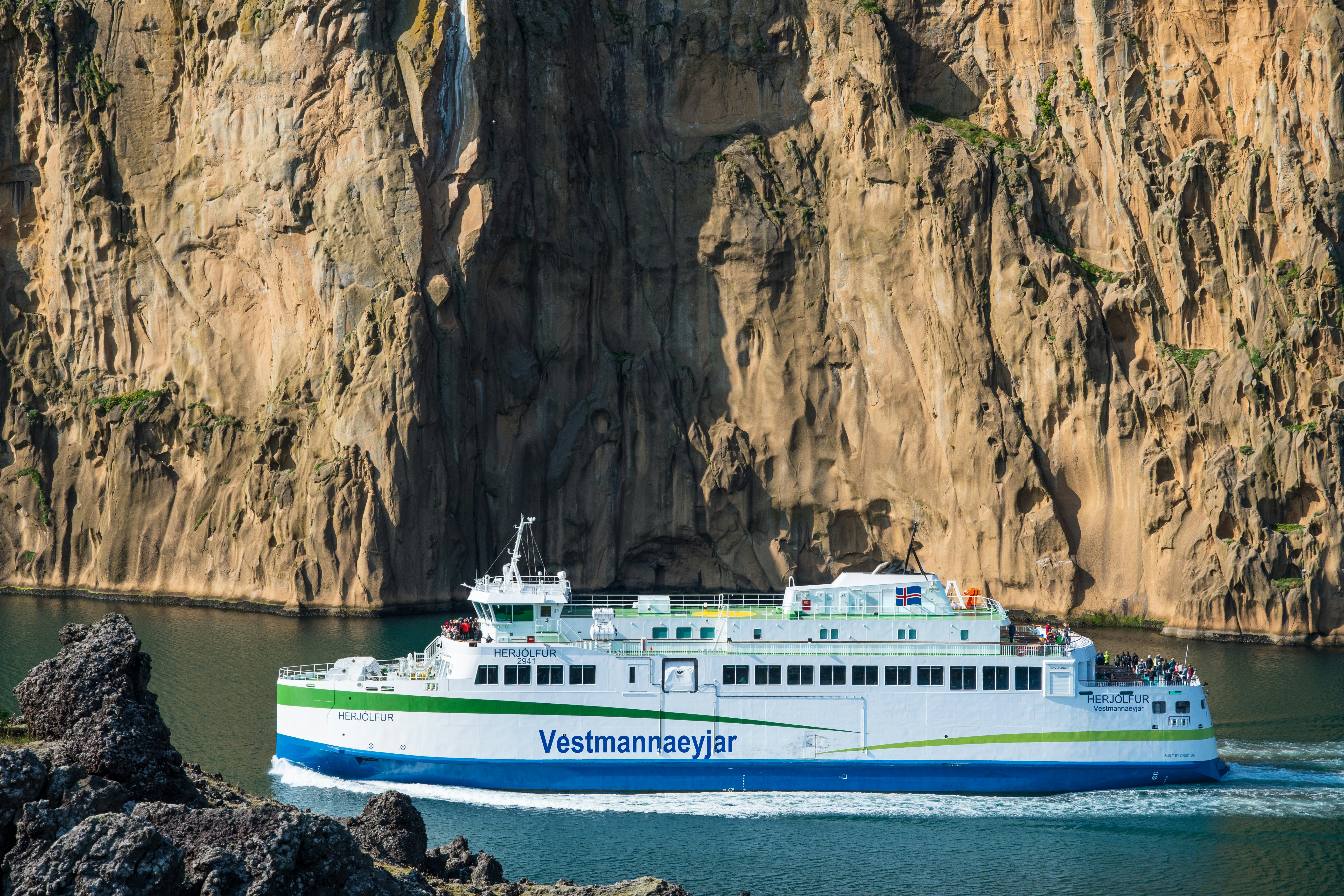
Enjoying day trips by boat or ferry
Boats are mainly sightseeing options for travelers, heading out for a day on the water and then returning to the same port of call. However, there are a few areas where taking a ferry is the main way to get around. Most major routes carry vehicles as well.
Take the ferry from Reykjavík to the uninhabited island of Viðey
Leaving Reykjavík, this ferry makes regular trips to uninhabited Viðey Island and its wealth of hiking trails, seabird colonies and historic buildings. Buy tickets at ferry terminals at Skarfabakki and in the Old Harbor (summer only). Cars are not allowed on Viðey Island.
Save time on the road by taking the Brjánslækur ferry
This year-round ferry shaves off a significant amount of time traveling to the Westfjords from the Snæfellsnes Peninsula. Departing from Stykkisholmur on the peninsula, the ferry stops at Flatey Island before docking at Brjánslækur.

Head out to Heimaey on the Vestmannaeyjar ferry to spot puffins
This route connects southwestern Iceland to Vestmannaeyjar, an archipelago of craggy sea cliffs with birdlife, including millions of puffins that come here to breed. The picturesque town of Heimaey is nestled within a lava flow that nearly destroyed half the town in the 1970s. Visit Herjólfur to book tickets.
Go toward the Arctic Circle on the Grímsey ferry
Transporting travelers to the Arctic Circle to view colonies of puffins, scenic cliffs and basalt rock formations, the ferry from Dalvík to Grímsey will give you about two to five hours worth of exploring on the island before it's time to head back. Or you can overnight at one of the island's two guesthouses or the campground. Book tickets online.
Experience the relaxed island of Hrísey after a short ferry ride
Easily reached from the mainland, Hrísey is a low-key escape (population: under 200) with spectacular views of Eyjafjörður in the central-north part of Iceland. Departing from Árskógssandur seven times every day, the ferry takes about 15 minutes. See the full schedule online.


Accessible transportation in Iceland
Iceland can be a difficult place to travel around for those with mobility issues. Although things are slowly improving, particularly at nature sights, getting around is a different matter altogether.
Reykjavík's buses are wheelchair accessible, though users must enter and exit via the middle door on their own. Outside of the capital, the majority of regional buses aren't wheelchair accessible.
Iceland Unlimited is the only tour agency that can organize accessible tours and rental cars with hand controls. The latter are only suitable for people in manual wheelchairs that can be placed into the trunk of the car.








